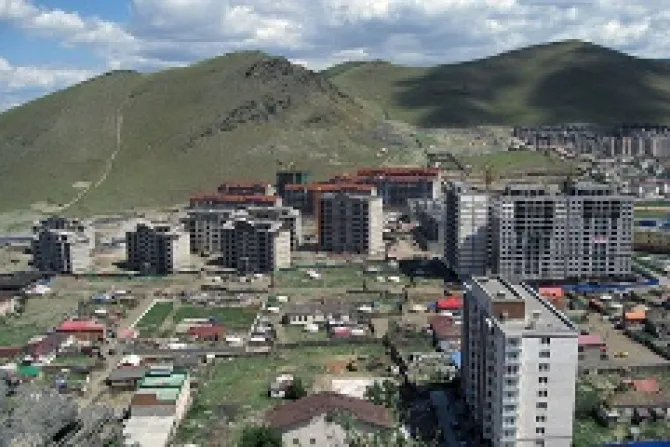Ulaanbaatar, Mongolia, May 22, 2014 / 19:03 pm
Bishop Wenceslao Padilla, prefect of Ulaanbaatar – the local Church covering all of Mongolia – spoke with Aid to the Church in Need earlier this month about the Church's growth in the country.
"We started from scratch," the bishop told the international Catholic charity, describing the return of Catholic missionaries to the nation after the fall of communism.
"The first Holy Masses were read in a hotel. After that we rented apartments and forged initial links with believers through international organizations and embassies."
The first modern mission to Mongolia had been established in 1922, but under a communist government religious expression was soon thereafter suppressed, until 1992.
When the democratically elected government invited the Church back to Mongolia, then-Fr. Padilla was accompanied there by two other priests of the Congregation of the Immaculate Heart of Mary.
Ten years later, the Ulaanbaatar mission was elevated to a prefecture apostolic, and Fr. Padilla, who was its superior, was appointed prefect. At that time, there were 114 Catholics in the country.
That figure has slowly, but steadily grown; Bishop Padilla reported that there are now 960 Catholics in the country, while Sister Sandra Garay, a member of the Consolata Missionaries who is serving there, put the figure at 1,200 in an August 2013 interview with CNA.
A little over half Mongolia's population is Buddhist, and most of the remainder is non-religious. Islam, shamanism, and Christianity – primarily Protestantism – have mere footholds among the people.
Buddhism has come to be seen as a part of Mongolian identity, with other religions regarded as foreign.
Minors under the age of 16 can only participate in catechesis with the written consent of their parents, priests cannot be identifiable as such in public, and Christian profession is allowed only on Church premises.
"Mongolia is in a state of upheaval," Bishop Padilla said. "People are becoming settled and no longer live as nomads. Then there is a growing materialism; many are turning away again from the faith."
And yet, he added, "since the end of communist rule people have basically opened up to the faith … certainly a lot depends on the dedication of the missionaries, but evangelization has many facets.
Whatever we do, social work, education, humanitarian aid, it all has an impact on society."
The prefecture apostolic has four parishes, as well as schools and social facilities, "which are expressly desired by the state," Aid to the Church in Need wrote.
The Church encounters tremendous challenges there – a nation covered by steppes which experience frigid winters, during which temperatures drop to as low as -22 Fahrenheit. Nearly half the country's people live in Ulaanbaatar, and many of the rest are nomadic.
The Church in Mongolia currently has 20 priests, two monks, and 49 nuns serving there, from 12 religious congregations.


